Always Innovating with the Brightest Minds
Through our focus on technology R&D, Graphika is committed to advancing our social network analysis, machine learning, and AI capabilities to better service clients and research partners.















Tools and Unique Features
The Graphika Labs also produced two tools deployable at scale and focused on detecting disinformation campaigns.
The Coordination Framework™
Detecting strategic influence campaigns online and at scale by analyzing network anomalies across three dimensions (network, semantic, temporal) and their intersections. Born out of intense, multi-year research on disinformation campaigns.
The Contagion Monitor™ Analytical Tool
Anticipating virality of strategic influence campaigns. The Contagion Monitor™ identifies objects propagating through the networks maps with a high degree of social reinforcement that are likely to quickly reach virality.
Developed through a multi-year MINERVA grant, with the partnership of Cornell University and Johns Hopkins University Applied Physics Laboratory.
See More Stories on Our BlogView Graphika Blog
Publications
Graphika’s thought leaders have pioneered the field of cyber-social network analysis since its inception and remain the most trusted experts consulted by leading academic and government institutions.
The IRA and Political Polarization in the United States
| Monday December 17, 2018
On behalf of the U.S. Senate Select Committee on Intelligence, Graphika and Oxford’s Internet Institute co-authored this study on the extent of foreign influence in the 2016 presidential election.
Read the Full Report HereThis Is What Filter Bubbles Actually Look Like
| Wednesday August 22, 2018
Graphika’s Camille François and John Kelly, Ph.D co-authored this study on political polarization online in the Democracy Issue of MIT Technology Review.
Read the Full Report HereMeasuring Coordinated vs. Spontaneous Activity in Online Social Movements
| Wednesday May 9, 2018
Powered by Graphika’s own Coordination Framework™ technology, our science team authored this paper proposing innovations in data science.
Read the Full Report HereDisinformation, ‘Fake News’ and Influence Campaigns on Twitter
| Monday October 1, 2018
Graphika’s Vladimir Barash and George Washington University co-authored one of the largest analyses to date for the Knight Foundation on how fake news spread on Twitter during and after the 2016 election campaign.
Read the Full Report Here
The Yemen War Online: Propagation of Censored Content on Twitter
| Wednesday February 28, 2018
Graphika’s John Kelly, with Helmi Noman and Rob Faris, co-authored this piece for the Berkman Klein Center for Internet & Society at Harvard, that analyzes the sharing of information on Twitter among different political groups related to the ongoing conflict in Yemen.
Read the Full Report HereComplex Contagions and the Diffusion of Popular Twitter Hashtags in Nigeria
| Saturday December 26, 2015
Using the #bringbackourgirls hashtag, the authors of this paper, including Graphika's Science Director, Vladimir Barash, identify the point at which a local social movement transforms into a more widespread phenomenon, providing the foundation for the Contagion Monitor technology.
Read the Full Report HerePolarization, Partisanship and Junk News Consumption over Social Media in the US
| Sunday July 29, 2018
What kinds of social media users read junk news? This piece co-authored with a team from the Oxford Internet Institute examines the distribution of the most significant sources of junk news in the three months before President Donald Trump’s first State of the Union Address.
Read the Full Report HereKilling The Truth: How Russia is Fueling a Disinformation Campaign to Cover up War Crimes in Syria
| Wednesday December 20, 2017
The Syria Campaign's report with research and analysis from Graphika demonstrated how online bots and trolls contributed to a Russian-backed disinformation campaign to smear Syria’s rescue workers, the White Helmets.
Read the Full Report HereJunk News on Military Affairs and National Security
| Monday October 9, 2017
Social media provides political news and information for both active duty military personnel and veterans. This piece co-authored with a team from the Oxford Internet Institute analyzes the subgroups of Twitter and Facebook users who spend time consuming junk news from websites that target US military personnel and veterans with conspiracy theories, misinformation, and other forms of junk news about military affairs and national security issues.
Read the Full Report HereCan x2vec Save Lives? Integrating Graph and Language Embeddings for Automatic Mental Health Classification
| Friday August 7, 2020
Graph and language embedding models are becoming commonplace in large scale analyses given their ability to represent complex sparse data densely in low-dimensional space. Integrating these models' complementary relational and communicative data may be especially helpful if predicting rare events or classifying members of hidden populations—tasks requiring huge and sparse datasets for generalizable analyses.
Read the Full Report Here
Content Modeling in Multi-Platform Multilingual Social Media Data
| Wednesday February 28, 2024
Graphika co-authors Arman Setser, Libby Lange, Kyle Weiss, and Vladimir Barash detail a method of large-scale social media data analysis that allows for multilingual conversations to be analyzed in depth across any number of social media platforms simultaneously.
Read the Full Report HereInterested in Collaborating?
Graphika Labs staff provide in-house expertise and connections to major research institutions. Graphika Labs is equipped with unique tools for solving the hardest problems in computational social science. Through it all, Graphika Labs maintains a firm commitment to rigorous and ethical research at the intersection of industry and academia.
Let's Work TogetherThe Best of Graphika in Your Inbox.
Sign up for updates via our email newsletter